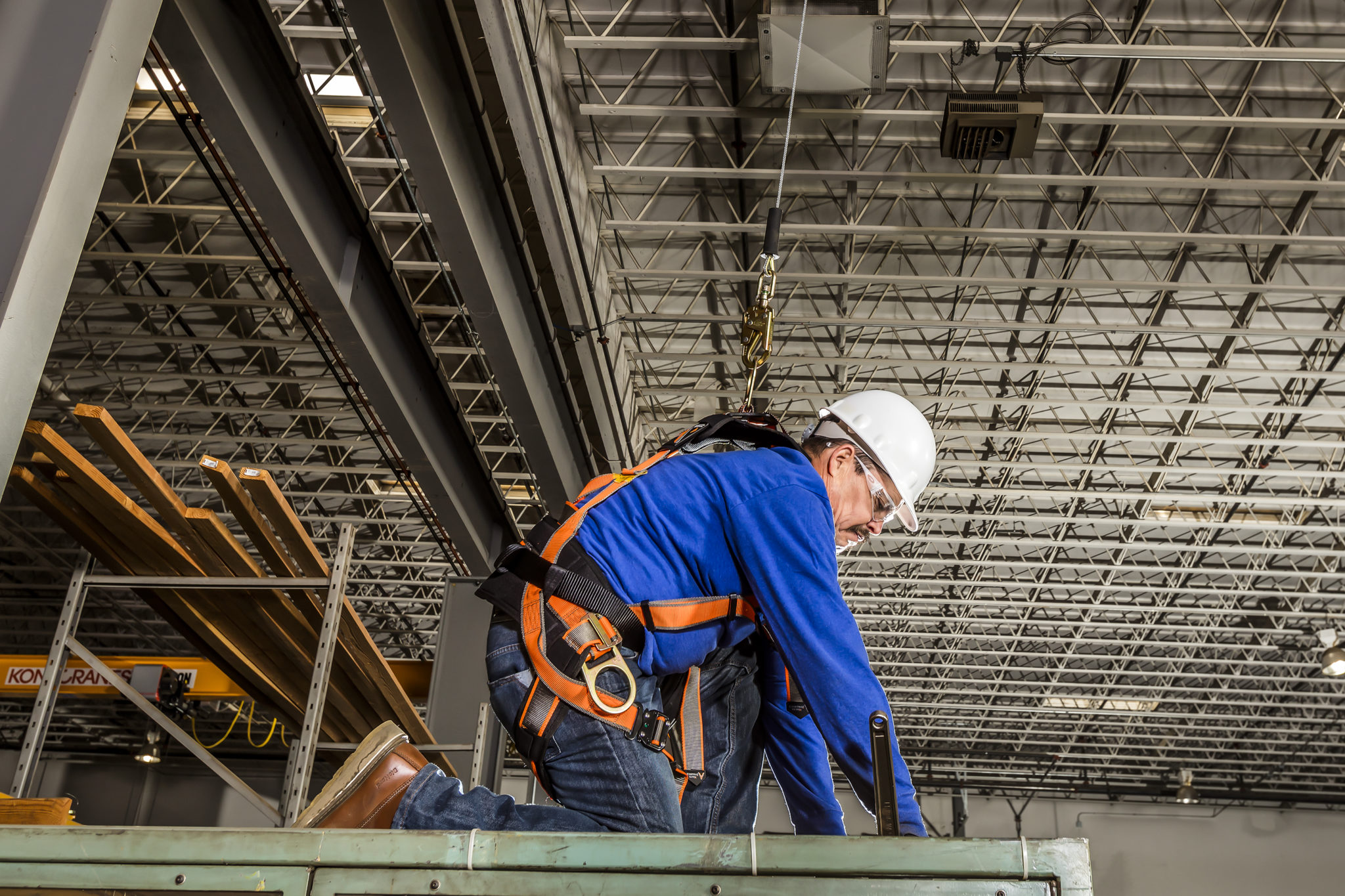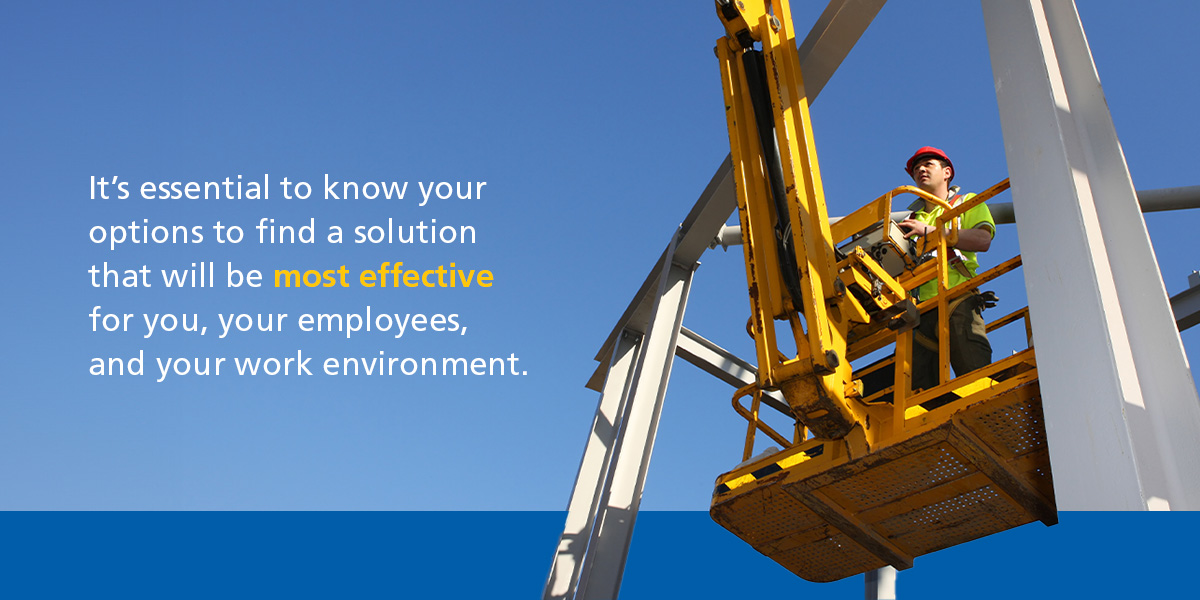
Administrative Controls: What Can You Do?
September 12, 2024
It is a serious decision to place a worker in a situation where they need to access dangerous heights to do their job. The American National Standards Institute (ANSI) Fall Hazard Hierarchy involves different levels of protection for workers from the hazards of heights.
Under ANSI Z359.2, the ANSI Fall Hazard Hierarchy goes as follows:
- Elimination or Substitution
- Passive Fall Protection
- Active Fall Restraint
- Active Fall Arrest
- Administrative Controls
You can learn more about the different levels of the hierarchy on our blog. Below, we explore the final level of the hierarchy — administrative controls.
What Is an Administrative Control?
Under ANSI Z359.0, definition 2.4 defines administrative controls as employer-required safety practices or procedures that help prevent falls. They do this by alerting or warning authorized individuals to stay away from fall hazards.
Administrative controls are strategies and measures implemented to manage and reduce workplace hazards through changes in work practices, procedures, and policies. These controls focus on altering the way workers behave rather than modifying equipment or physical environments. The goal is to reduce the severity or impact of hazards and enhance overall safety. Administrative controls include the following:
- Training: Education and training are vital mechanisms to ensure workers learn about workplace hazards and how to limit personal exposure.
- Codes of practice: A code of practice creates safe work practices for specific hazards.
- Working alone protocol: Part 28 of the Occupational Health and Safety Code requires a working alone protocol so workers identify working alone hazards and set controls.
- Safe work practices: This is a written method for showing workers how to work safely with specific hazardous materials.
- Emergency preparedness: Emergency preparedness strategies can prevent or reduce injuries or damage to property.
- Documentation and signage: All locations containing hazardous materials need warning signs on the door.
- Maintenance and housekeeping: A good mix of housekeeping and equipment maintenance is critical to controlling exposure to workplace hazards.
- Preventive health measures: Preventive health measures are necessary to prevent serious illnesses or injuries.
Only use administrative controls after implementing and considering substitution and engineering controls.
Administrative Controls in Safety

Many different types of administrative controls can enhance the protection of people who work at height. As a result, it’s essential to know your options to find a solution that will be most effective for you, your employees, and your work environment.
Warning Signs
If there are areas at heights that legally require fall protection but do not look like they need protection, warning signs can be a great reminder. They are low-cost and easily applied and can remind people about the hazards of different workspaces. When you mark an area as potentially dangerous, people are more likely to adhere to the safety requirements in that space.
It also shows federal Occupational Safety and Health Administration (OSHA) inspectors that a company’s safety manager is aware of the hazards present in a work location. Admittedly, placing a sign is not a guaranteed way to ensure that people working at heights will use fall protection equipment. However, warning signs are a great way to remind them that they are entering a dangerous zone.
Training
Although it may be challenging to find time to hold a fall protection training session, it can be one of the most direct ways to ensure that employees understand the fall hazards in the workplace and how they can protect themselves. Depending on your situation, there are several different ways to approach training.
Training for first-time fall protection users should be more of a hands-on demonstration where a competent person instructs the Authorized User on identifying fall hazards, properly donning a harness, and moving around an area with fall hazards without exposing themselves to the dangers.
An annual fall protection training refresher course for people who use fall protection relatively frequently could be as simple as watching a brief training video administered by a Competent Person. Another way to quickly assess an employee’s fall protection knowledge — as part of a refresher on fall protection techniques — is for a Competent Person to test the employee’s skill and familiarity with using fall protection devices and assessing hazards at height.
Although training can be time-consuming, the benefits will always outweigh lost time. Remember, when a worker falls in the workplace, there are many hours of lost work time and a massive decrease in productivity. By taking just one hour out of one work week once or twice a year to ensure proper employee fall protection training, you can save hours of lost time and possibly even the lives of your employees.
Fall protection warning signs and training sessions are the most popular forms of administrative controls because they involve the most direct interaction with people who work at height. However, there are a few additional ways that employers can apply administrative controls to remind employees about the need for fall protection in the workplace. Lighting can draw extra attention to a hazard or a warning sign.
But remember, more complex controls will require more frequent maintenance and administrative monitoring than less complex variations.
Learn More Today
Do you have other effective ways to apply administrative controls for fall protection enforcement? Tell us about it in the comment section below! Browse our products today to find the right fall protection equipment for your needs.
Categories
Share this post
Let us help you
Contact us today to find the perfect product fit for your job
